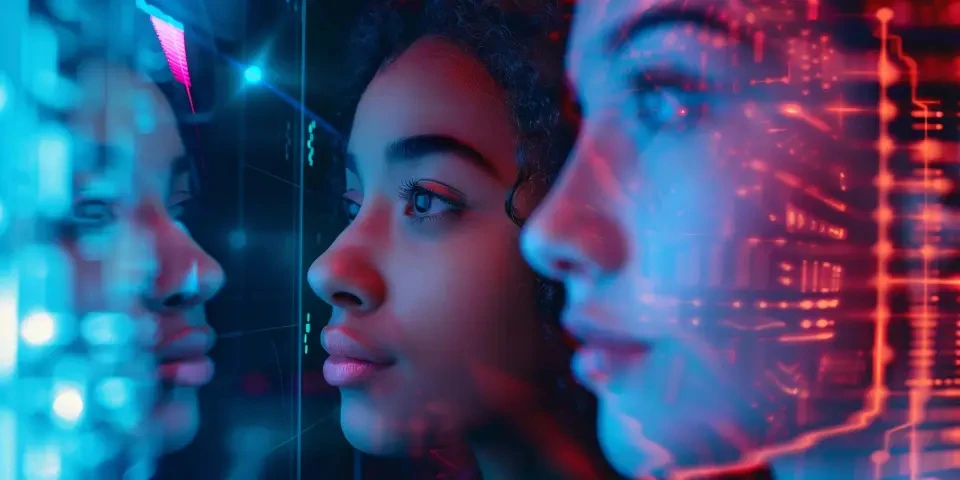The Evolution of AI Humor 10 Jokelubs to Delight Your Data-driven Mind
Artificial Intelligence (AI) has come a long way in recent years, impacting various aspects of our lives. From improving search engines to enabling self-driving cars, AI has revolutionized several industries. However, one area where AI has shown exceptional growth and creativity is in the realm of humor. In this article, we will explore the fascinating evolution of AI humor and present you with 10 hilarious jokelubs that are bound to tickle your data-driven mind.
1. The Early Days: Basic Puns and Witty Wordplay
In the early stages of AI humor, jokes were often simple puns and wordplays generated by basic algorithms. These jokes were amusing but lacked the sophistication required for truly intelligent humor. However, they laid the foundation for future developments.

Example:
Q: Why don't scientists trust atoms?
A: Because they make up everything!
2. The Emergence of Neural Networks: Enhanced Context and Creativity
With the rise of neural networks, AI humor took a significant leap forward. These networks enabled AI models to understand context, enhancing the quality and creativity of jokes generated. Neural networks learned from vast amounts of text data, allowing for more refined and intellectually stimulating humor.
Example:
Q: Why did the computer take a nap?
A: Because it had a hard drive!
3. Reinforcement Learning: Fine-tuning Humor with User Feedback
Reinforcement learning techniques allowed AI models to improve their humor by considering user feedback. By analyzing the reactions to certain jokes, AI systems could fine-tune their understanding and generation of humor, ensuring a better response from users.
Example:
Q: What did the grape say when it got stepped on?
A: Nothing, but it let out a little wine!
4. Contextual Understanding: Tailoring Jokes to Specific Situations
Advancements in AI language models equipped with contextual understanding have enabled the generation of jokes specific to certain situations. These models analyze the context provided by the user and craft jokes that are relevant and relatable.
Example:
Q: Why did the scarecrow win an award?
A: Because he was outstanding in his field!
5. Emotion Detection: Gauge Your Mood for Personalized Humor
AIs with emotion detection capabilities can assess the user's mood and generate jokes accordingly. By understanding emotions, AI systems can cater to individual preferences, ensuring a personalized and enjoyable humor experience.
Example:
Q: Why did the bicycle fall over?
A: Because it was two-tired!
6. Integration with Social Media: Memes and Trending Topics
The integration of AI humor with social media platforms has resulted in the creation of memes and jokes based on trending topics. AI algorithms quickly adapt to viral content and generate humor that is relevant and relatable to today's world.
Example:
Q: What do you call a computer that sings?
A: Adele, which stands for A Data-Enabled Language Engine!
7. Visual Comprehension: Memes and Image-based Jokes
Through advancements in computer vision, AI models can now comprehend and generate jokes based on images. This new form of humor combines visual cues with witty punchlines, making it both entertaining and visually engaging.
Example:
Q: Why did the picture go to jail?
A: Because it was framed!
8. Generating Jokes in Multiple Languages
AI models are becoming increasingly adept at understanding and generating humor in multiple languages. These models can translate and adapt jokes, ensuring that the humor transcends linguistic barriers and reaches a global audience.
Example:
Q: ?Qué le dice un jardinero a otro?
A: Nos vemos en el jardin 'Zen'!
9. Creating Original Humor Styles
AI humor is not limited to imitating human comedians but also involves creating its own unique styles of humor. From sarcastic one-liners to abstract jokes, AI models now have the ability to experiment with various humor genres.
Example:
Q: Why did the developer go broke?
A: Because he lost his domain in a bet with the cloud!
10. Collaborative AI Comedy
The future of AI humor lies in collaborative efforts between multiple AI systems. These systems can work together to generate jokes that combine different styles and perspectives, resulting in even more nuanced and entertaining humor.
Example:
Q: How does a computer scientist play hide and seek?
A: They keep changing their hide-and-seek algorithm until no one can find them!
As AI humor continues to evolve, we are witnessing machines becoming more proficient at generating jokes that resonate with human audiences. While it may never replace the wit and creativity of human comedians, AI humor offers a unique and exciting blend of technology and laughter.
Frequently Asked Questions:
Q: Can AI humor be as good as jokes created by humans?
A: AI humor is constantly improving but still has a long way to go to match human creativity. However, it offers a different and entertaining form of comedy.
Q: Are AI-generated jokes plagiarized since they learn from existing content?
A: No, AI models generate jokes based on patterns and structures they learn from vast datasets. It is a form of computational creativity rather than plagiarism.
Q: Can AI humor have cultural sensitivity?
A: AI models can be trained to be culturally sensitive and avoid offensive or inappropriate jokes. However, biases can still exist and need to be addressed during the training process.
Explore your companion in WeMate